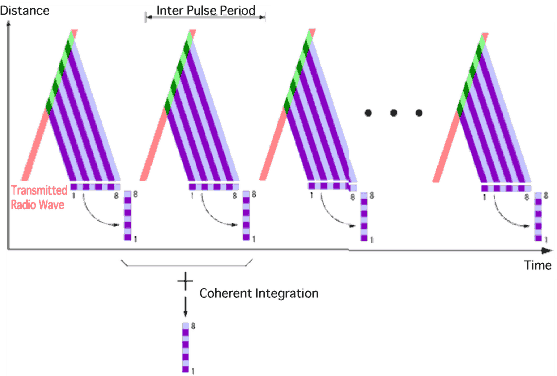
Time Domain Integration (Coherent Integration)
Most radio waves pass through the atmosphere without significant attenuation; this is why radio (including radio broadcasts and mobile phone service) is such an effective means of communication. Wind profiler radar, on the other hand, relies on the detection of radio waves scattered by subtle atmospheric turbulence; the device must therefore be equipped to receive weak radio signals. The WPR thus features digital signal-processing to increase sensitivity by reducing the effects of noise.
This figure presents a time chart for the radar's transmission and reception of pulsed radio waves. The horizontal and vertical axes represent time and distance between the antenna and the scatterer, respectively.
With coherent integration, the acquired signal (a complex time series signal obtained by orthogonal detection) is integrated over a time domain for a period during which the scatterer is assumed to be coherent (i.e., keeping a steady wave structure). The amplitude of the signal is x nc, so the power is x nc2. On the other hand, the power of the white noise in this case is x nc; consequently the signal-to-noise ratio (SNR) is x nc. 
|